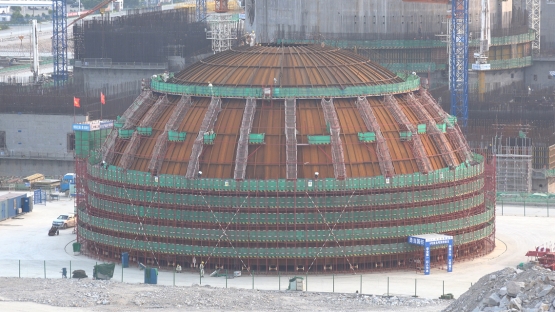Some countries are introducing nuclear power for the first time; others are expanding their fleet. This is one of the topics on the agenda of the International Ministerial Conference on Nuclear Power in the 21st century. This article sheds light on China as the fastest expanding nuclear power producer in the world.
It has 38 nuclear power reactors in operation and 19 under construction1/. It has increased its number of operating reactors by more than ten times since 2000 and plans to bring five units into commercial operation this year alone. It is China, the fastest expanding nuclear power generator in the world.
“China is a big country. We have higher energy demand than other countries, but also more room for nuclear power,” said Zheng Mingguang , President of the Shanghai Nuclear Engineering Research and Design Institute (SNERDI).
In the list of ‘expanding countries’ in the world, China stands at the very top, followed by Russia with seven reactors under construction, India six and the Republic of Korea three. Currently, the countries with most reactors in operation are the United States, France, Japan and China.
Trying to curb its reliance on coal, which pollutes the air and is hard to transport from the coal mines in the west and north of the country to the economically developed southeast coast, China is building most of its reactors along this coast. With nuclear, it plans to increase energy security, lower its reliance on coal and oil and limit CO₂ emissions while keeping up with its economic growth.
A test for the world
China’s 19 reactors under construction include several advanced models. “The nuclear industry is watching China put the first AP1000 reactors in Sanmen and Hiayang in operation,” said Nesimi Kilic, nuclear engineer at the IAEA. Out of these, Sanmen-1 is expected to be finished by 2018.
The EPR reactor in Taishan is also expected to enter commercial operation in 2018. With the commissioning of Sanmen-1, more more such reactors could be built in other countries, according to Kilic. “China has become a pilot for the world,” he remarked.
The economics of nuclear
China’s energy regulator, the National Energy Administration, is expected to set the country's nuclear capacity target to 120-150 gigawatts by 2030, up from about 38 in 2017. Thanks to this scale, nuclear is economically competitive, Chinese experts have said.
“We have a well-established, complete system in place,” Zheng said. “Not only from the point of view of design, but also manufacturing, quality assurance, safety, construction, and so on. This is why nuclear power in China is economically feasible.”
Localizing the technology — design and manufacturing in China — is what is giving the Chinese an advantage and making this expansion possible, Kilic said. China has the facilities, the technology and the human capability.
Expansion abroad
China’s ambitions are also global as it plans to export nuclear power reactors in the future.“With technological development, the economy of nuclear power could be better in the future,” Zheng said, adding that countries need to support each other. China is already sharing best practices from its experience, using the IAEA as a platform.
__________
1/ These figures do not include six units in operation and two units under construction in Taiwan, China.
"We have a well-established, complete system in place, not only from the point of view of design, but also manufacturing, quality assurance, safety and construction."





